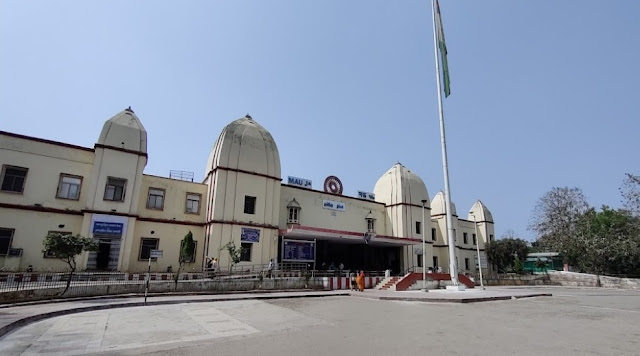Garhwa District West Bengal: Things to do in Garhwa | Places to Visit in Garhwa | Cooch Behar District Garhwa
Garhwa
district is one of the 24 districts of the Indian state of Jharkhand. It comes
under Palamu division. The district was established on 1 April 1991. It was
carved out of Palamu district to form a new district.
Area
of Garhwa District
It
is spread over an area of 4,044 km2. District Garhwa shares
its borders with the Kaimur and Rohtas districts of Bihar state with the Son
River in the north, Palamu district in the east, Sarguja district of
Chhattisgarh state in the south and Sonbhadra districts of Uttar Pradesh in the
west.
The Garhwa district is divided into three subdivisions i.e. Garhwa, Sri Banshidhar Nagar and Ranka, which are further divided into 20 blocks, 156-gram panchayats, and 916 villages. At the time of the creation of the district, the district consisted of only eight blocks viz. Bhandariya, Bhawanathpur, Dhurki, Garhwa, Manjiao, Meral, Nagar Untari and Ranka. Later, eleven more blocks were constructed such as Chinyali, Dandai, Kandi, Kharondhi, Ramkanda, Ramuna, Sagma, Baradiha, Danda, Bishunpura, Ketar and Barghar.
The district of Garhwa
is mostly surrounded by forests and the district is only one big city, Garhwa.
Constituencies
of Garhwa District
Garhwa
district has two assembly constituencies i.e. Garhwa and Bhawanathpur. Both are
part of Palamu Lok Sabha constituency.
 |
| Shiv Pahadi, Bhawanathpur |
Population
of Garhwa District
According
to the 2011 census, Garhwa district had a population of 13,22,387. The Garhwa
district has a sex ratio of 933 females for every 1000 males. The languages spoken
by the district are Hindi, Magahi, Bhojpuri, Sadri and Urdu.
Economy
of Garhwa District
The
economy of the district is dependent on agriculture. Rice, corn, wheat,
sugarcane, oilseeds, pulses, and vegetables are grown in the district. District
Garhwa is rich in minerals. Dolomite and limestone are found at many places in
the district. The areas around Bhavanathpur and Nagar-Untari are rich in
dolomite. Coal reserves are found near Bhandariya block. The district also has
stores of graphite, china clay and granite. Though the district is rich in mineral
ores but it still lacks large scale industries, There was a huge limestone
plant of Steel Authority of India Limited in Bhavnathpur, which has now been closed.
 |
| Mandal Dam |
The
district has a literacy rate of 62.18%. Shanti Niwas High School, Gyan Niketan
Convent School, Jawahar Navodaya Vidyalaya, RK Public School, DAV Public School
Bhawanathpur, Kendriya Vidyalaya, SPD College, Garhwa Polytechnic College,
Namdhari College, Agricultural College Garhwa, Vananchal Dental College and
Hospital, etc. are some of the best educational institutes. Of district.

Vananchal Dental College and Hospital
Travel Attraction in Garhwa District
Bhagwati
Temple, Gunga Jhanj Waterfalls, Sukhaldari Waterfalls, Hisatu Waterfalls,
Bansidhar Temple, Raja Pahari Shiva Temple, Sri Satbahini Waterfall, Sri Satbahini
Temple, Ketar Mandir and Mandal Dam are some of the famous travel attractions
of the district.
 |
| Sukhaldari Waterfalls |
How
to reach Garhwa
The district is well connected to other major cities of the country via road and railway. Daily bus services are available from Ranchi and major districts of Jharkhand, Bihar, Uttar Pradesh and Chhattisgarh.
The nearest airport in the
district is Birsa Munda Airport of Ranchi which is 212 km away from Garhwa.
Garhwa Railway Station, Garhwa Road Junction Railway Station and Nagar Untari
Railway Stations play an important role for the transportation of people
because these stations are directly connected to the cities like Jabalpur,
Ambala, Jammu, Delhi, Allahabad, Patna, Varanasi, and so on.







Comments